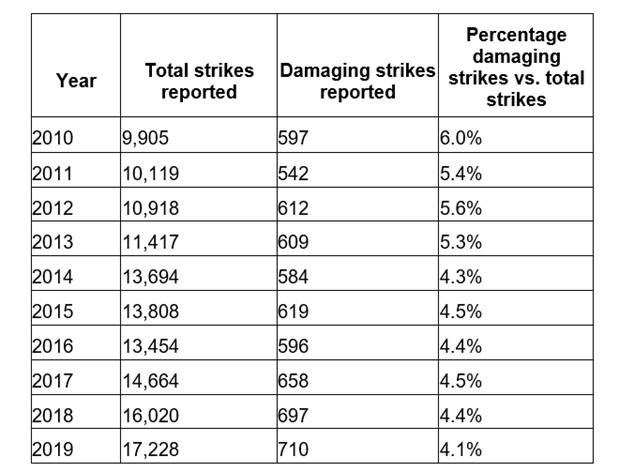
The Wildlife Strike Database is a publicly available research tool that allows anyone to report and investigate wildlife strikes throughout the U.S. Wildlife strike data is validated by USDA, with the Smithsonian verifying biological data through feather identification and DNA analysis.
The Database supports both strategic planning and tactical prevention. Annually, the FAA publishes an analysis report on cumulative strike data within the Database, offering aviation stakeholders accurate, searchable data for specific wildlife strike analyses and for the creation, development, and monitoring of airport Wildlife Hazard Management Plans.
Due largely to Database utilization, the percent of wildlife strikes which are damaging has fallen over the years. Since 2010, the percentage of damaging strikes have decreased while the total number of annual strikes have increased tremendously. This is largely attributed to stakeholder engagement and outreach.
ATR continually improves the Database to meet stakeholders’ needs. Planned enhancements include an upgraded user interface and streamlined functionality to validate and post new strike data more quickly.
Version 4.1.20 of the database is available live here.
Non-lethal Technologies for Surveillance and Deterrence provide further means for managing wildlife hazards. Detection technologies such as radar allow airport operators to respond to wildlife activity, while acoustical and visual deterrents like specialized Unmanned Aircraft Systems (UAS), aim to scare wildlife away from the attractive airport environment.
Finally, other innovative Control Methods and Techniques are employed across the U.S. to control wildlife populations in and around airports. Artificial turf, wildlife tagging, and even K9 units appear in Wildlife Hazard Management Plans to protect passengers and our ecosystem.